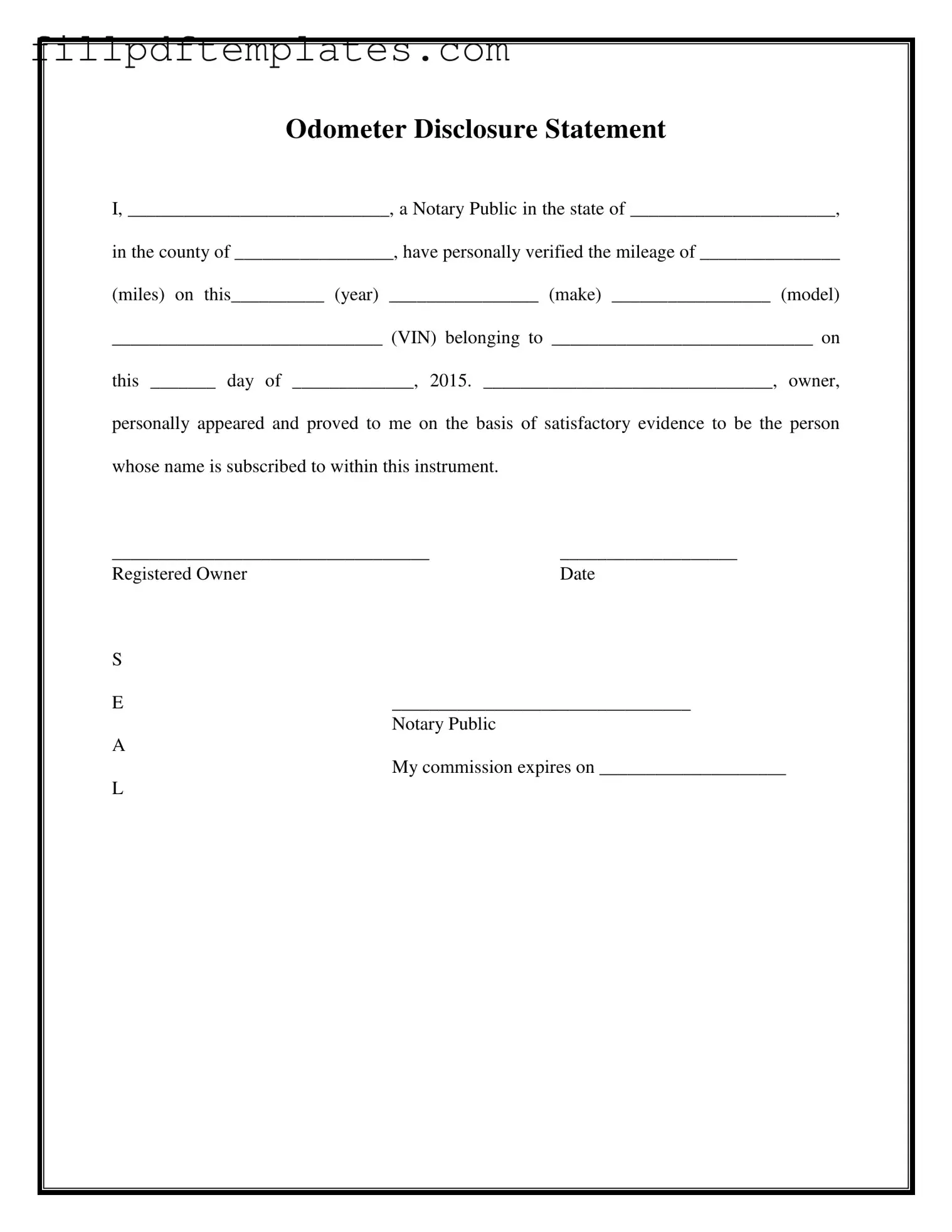Fill a Valid Notarized Odometer Statement Template
The Notarized Odometer Statement is a legal document used to confirm the mileage of a vehicle at the time of sale. This statement is signed by a notary public, who verifies the information provided by the vehicle's owner. If you need to complete this form, please click the button below.
Get Form

